 OPTi Inc.
OPTi Inc.
OPTi were a chipset manufacturer for PCs. Founded in 1989, they competed against SiS, ALI (Acer Labs), Intel and UMC for the desktop 386, 486 and Pentium motherboard chipset industry.
They produced chipsets for Dell, Compaq, Digital, Epson, Fujitsu, Gateway 2000, Hewlett-Packard, PC Chips, Octek, and more.
By 1996, OPTi were really struggling against Intel who had gained a large percentage of the chipset market. Red Hill has this to say about OPTi:
Red Hill
They produced a few graphics card chipsets, though these days they will be remembered more for their audio chipsets - The Audio Group, a division of the OPTi Multimedia Business Unit, designed all of their audio controllers and provided support to the companies that made audio adapter cards for retail sale (including BOCA Research, Diamond Multimedia, ExpertColor, EliteGroup, miro, Shuttle, and Turtle Beach), or integrated audio functionality into their system designs. This side of the business was sold in 1997 to Creative Labs who rebranded the OPTi Audio Group 'Ectiva'. The table below summarises the most common OPTi audio chipsets:
| 82C928 (MAD16) / 82C930 | 82C950 (MAC32) | 82C929 (MAD16 Pro) | 82C930, 82C924 | 82C925 | 82C931 | 82C933 (OPTiSound) | |
|---|---|---|---|---|---|---|---|
| Introduced | 1993 | 1994 | 1994 | 1995 | 1995 | 1996 | 1996 |
| Bus | ISA | ISA | ISA | ISA | ISA | ISA | ISA |
| Plug & Play | Yes | Yes | Yes | Yes | Yes | Yes | Yes |
| FM Synth | (external) | (external) | (external) | (external) | OPTiFM | OPTiFM | OPTiFM |
| Compatibility | AD, SB, SBP, WSS | AD, SB, SBP, WSS | AD, SB, SBP, WSS | AD, SB, SBP, WSS | AD, SB, SBP, WSS | AD, SB, SBP, WSS | AD, SB, SBP, WSS |
| ADPCM | No | No | No | Yes | Yes | Yes | Yes |
| CD-ROM Interfaces | Sony, Mitsumi, Panasonic | IDE, Sony, Mitsumi, Panasonic | IDE, Sony, Mitsumi, Panasonic | IDE | IDE | IDE | IDE |
| MPU-401 Interface | No | Yes | Yes | Yes | Yes | Yes | Yes |
| 3D Audio | No | No | No | No | No | No | Yes |
As you can see, OPTI's product ID numbering was all over the place. These days, the best of the bunch is probably the 82C930 or 82C929/82C929A. These pre-dated the horrible OPTiFM internal (so cards came with either a true Yamaha YMF262 or the LS-212 clone), and provided the more future-proof IDE interface. I wouldn't think twice about the ADPCM support or the 3D audio - ADPCM was only used in a handful of games, and there are much better 3D positional audio options out there.
The "OPTi Bus"
Around the time VESA Local Bus was being developed for faster 486 motherboards, many motherboard and chipset manufacturers came up with their own proprietary buses. OPTi's was called OPTi Local Bus and arrived around 1991.
NEC Technologies was one PC manufacturer to adopt this bus for their Image PC series. It combined a VESA Local Bus (VLB) IDE controller with block mode IDE multiple-sector reads and writes, significantly outstripping performance on competing 486DX/33 and 486DX2/66 systems that ran on the traditional ISA bus.
The slots themselves are typically brown and look similar to the old EISA bus slot but are the same length as an ISA 16-bit slot. Unlike VLB, the OPTi bus doesn't have an "ISA" part to the slot. The motherboard did not necessarily have an OPTi chipset to support the OPTi local bus.
Motherboards that used the OPTi Local Bus include:
- Chaintech 433SCL
- Leading Edge 486 boards
- Orchid Superboard series
- NEC Image 486es systems
Motherboard Chipsets
SCNB (Single chip notebook) 82C463 or 82c263Click here for a brochure from 1992. |
82C281No information on this. |
82C283No information on this. |
82C291, 82C206
Motherboards known to have used this chipset were:
|
82C295No information on this. |
82C381This was a 386 chipset consisting of two chips. |
82C391/82C392B
|
82C465MVB32-bit 486/586 Mobile Chipset with PCMCIA. "The OPTi 82C465MVB chipset is a highly integrated device that supports 32-bit 486 and 5 x 86 architectures. It implements ISA-compatible core logic, with power management and CPU thermal management hardware, in a single device. Its feature set provides an array of control and status monitoring options, all accessed through a simple and straightforward interface. All major BIOS vendors provide extensive software "hooks" that allow system designers to integrate their own special features with minimal effort. The 82C465MVB requires very little board space, implemented as a single 208-pin PQFP package. When used with the 82C602A RTC/Buffer companion chip, the chipset provides necessary interfaces with a minimal amount of support logic."
OPTi website, Nov 1996
|
HiB (82C481, 82C482)The "HiB" chipset was a 486 chipset with write-through cache. Dated around 1994. |
82C491, 82C493
|
82C495SX / SLC / XLC
|
82C496No information on this. |
82C498No information on this. |
82C499No information on this. |
PTM3V / Python (82C546, 82C547)The "Python" or PTM3V chipset was released in 1994, designed for the first Pentium motherboards. It supported the P54C 3.3V Pentiums but was also able to work with some components that ran on 5V such as main memory and the ISA bus. It supported ISA, VESA Local Bus and PCI. The chipset consisted of the 82C546 AT Bus controller and 82C547 System controller. They also work alongside the 82C206 Integrated Peripheral Controller (IPC). It competed directly with VLSI's "SuperCore 590" chipset. The datasheet can be downloaded here. Award BIOS Chipset code: 215UM |
Viper (82C556, 82C557, 82C558)The OPTi Viper chipset arrived in 1995, and comprised the following ICs: 82C556: Data Buffer The OPTi Viper Desktop Chipset provides optimum performance and flexibility for 586-class desktop systems. Viper supports all compatible 64-bit processors, including Pentium 60/66/75/90/100, AMD K5 and Cyrix M1, at all frequencies - with a single chipset. The "green" three chip set also features an integrated PCI interface, robust power management and integrated support for dual processor configurations. Viper offers the highest DRAM and cache performance levels, enabling PC manufacturers to meet all 586-class system price/performance points with a single chipset design. Viper supports a wide variety of existing and emerging DRAM/cache technologies, including synchronous and asynchronous cache. A high-performance no-cache solution is also offered, thus laying the foundation for a cost-effective platform without compromising performance.
|
Viper-N
|
Viper-N+ (82C557M, 82C558E)The "Viper N+" chipset was designed for notebooks. Released in 1995, it consisted of the 82C557M System controller and 82C558E Peripheral Controller, plus supporting chips. It supports ISA, VLB and PCI buses, and 64-bit CPUs like the Pentium 75/90/100/120 on 66 MHz bus frequency. It also supports the Cyrix 6x86 CPU. A brochure can be found here. "The Viper-N+, the leading solution for Pentium processor PCI-based mobile applications. Viper-N+ features leading edge power management capability and flexibility for Intel Pentium, and Cyrix 6x86O processor-based notebooks. The chipset incorporates desktop-like performance features such as L1 and L2 cache support, a full 64-bit DRAM controller and an integrated PCI controller, in a highly integrated three chip set."
OPTi website, Nov 1996
VIPER NK/N+A mobile (laptop) motherboard chipset from 1996 that consisted of the following: 82C557M |
Viper DPA dual processor chipset from 1994 made up of: 82C556 |
Viper-M / Viper Max (82C566, 82C567, 82C568)In October 1995, OPTi released the Viper Max, their fifth generation Pentium chipset. The ViperMax provides enhanced CPU/memory performance, increased PCI transfer bandwidth, fully concurrent buses and add-on optional Unified Memory Architecture (UMA), synchronous DRAM and Universal Serial Bus (USB) support are also included. Its chipset comprised the following ICs: 82C566 Viper Max - UMA Pentium Processor Solution: The optional Unified Memory Architecture enables system manufacturers to save one to two megabytes of DRAM per system, thus reducing total system cost. This is accomplished through the UMA approach of sharing main memory DRAM signals between the system memory controller and the graphics controller. This product can also be configured as a non-UMA product and can be scaled to meet various system level design requirements. Viper-M - Multimedia-Enhanced Core Logic Chipset: The Viper-M, the second generation of the Viper family, is a multimedia-enhanced core logic chipset for Pentium-class PCI desktop systems. Viper-M provides a high performance, flexible, cost effective system level solution in a highly integrated three-chip set. The Viper-M is the leading chipset solution for corporate users as well as the fast growing consumer PC, small office/home office market. Like the Viper-N, the Viper-M chipset provides complete software compatibility for systems based on any Intel Pentium Processor, AMD 5k 86 or Cyrix 6x86. AwardBIOS CMOS Setup Utility User's Guide for OPTi Viper-M (82C556M, 82C557M, 82C558M) (EliteBIOS v4.51PG) - for BIOS Part #2A5UNxxx. The Viper-M chipset was used on the following motherboards: |
82C571, 82C572A 486 and Pentium motherboard chipset with support for VESA Local Bus and write-back cache. Click here for a brochure. Known for its poor performance. Used in Compaq PCs. Superceded by the "Viper M". It had no level 2 cache onboard but typical motherboards (Compaq included) got a COAST slot so you could install a 256 KB level 2 cache module. |
PTMAWB (82C596, 82C597)A motherboard chipset for the Pentium CPU family. |
Discovery (82C650, 82C651)The OPTi Discovery chipset provides a highly integrated solution for a fully compatible, high performance PC/AT platform based on the Intel Pentium Pro processor. The features of the chipset can be scaled to address entry level PCs or high-end desktop or workstation based on Intel's Pentium Pro Processor. |
82C682A 386 and 486 motherboard chipset with support for the EISA bus. 486 supports write-back cache. |
82C683A 386 and 486 motherboard chipset with support for the EISA bus. 486 supports write-back cache. |
82C691, 82C696A motherboard chipset with support for the EISA bus. |
EISA pentium (82C693, 82C697)Here's a brochure on the EISA Pentium chipset, dated 1993. |
FireStar (82C700)OPTi's FireStar single chip combines high performance features with space saving design capabilities for mobile applications. This solution is based on the Intel 3.3V Pentium processor, Cyrix 6x86 processor, and AMD K86 processor. The scaleable features of FireStar allow design of a high performance multimedia solution, or, by implementing the UMA features, a highly-integrated low-cost solution. |
VENDETTA (82C750)In June 1996, OPTi announced the Vendetta (82C750) single chip BGA. This product provides an extremely integrated solution for fully compatible, high performance PC/AT platforms. It supports the Intel 3.3V Pentium processor, Cyrix 6x86 processor, and AMD 5k 86 processors. As the latest member of OPTI's Desktop Chipset family, it has been designed to be the highest performance Pentium processor-based chipset on the market. |
scwb2 (82C801)A 486 motherboard chipset with support for VESA Local Bus and write-back cache. Click here for a brochure from 1992. |
82C802 / GREEN (82C802G) / 822Here's a brochure for this 486 chipset, dated 1993. Supports level 1 write-back cache. Award BIOS Chipset code: 2A4UK (Phoenix Technologies website claims this is 2C4UK). AwardBIOS CMOS Setup Utility User's Guide for OPTi 802G (EliteBIOS v4.51PG) - for BIOS Part #2C4UKxxx. Motherboards that use this chipset are:
|
TRUE GREEN (82C895)OPTi's final 486-generation motherboard chipset. It supports 486SLe, 486SX, 486DX, DX/2, DX/4 CPUs and write-back CPUs like the OverDrive (P24T). Motherboards with this chipset had ISA and VESA Local Bus expansion slots. Here's a brochure from 1994. Supports level 1 write-back cache. Some motherboards that use the 82C895 chipset are:- 419R1 Socket 3, Atrend OPTI895 Green, Dataexpert EXP4044VL, Shuttle HOT-419 |
Graphics Card Chipsets
OPTi 92C178 (1998) "The OPTi 92C178 provides an unmatched price/ performance LCD VGA solution for portable IBM compatible personal computers. The 92C178 offers high performance, full integration, low power consumption, complete panel support, and simultaneous LCD/CRT display as part of a highly integrated graphics subsystem."
OPTi website, 1996
High performance is made possible by a built-in fixed function graphics accelerator. The accelerator supports BitBlt, polygon fill, line draw, color expansion, and clipping. Acceleration is supported for pixel depths of 8, 15, 16, and 24 bits/pixel. Hardware cursor support and linear addressing support further enhance performance in GUI environments by removing software cursor overhead and eliminating bank switching. Features:
Architecture: The OPTi 92C178 contains the following major functional modules:
Drivers: Windows 95, NT 4.0 |
||||||||||||||||||||||||
OPTi 82C264 (1998) "OPTi's 82C264 True-Color GUI Accelerator is a one-chip solution which provides an unmatched price/performance VGA solution for personal computers. The 82C264 offers high performance and full integration as part of a PCI graphics system. Its high performance is made possible by a built-in fixed function graphics accelerator. The accelerator supports BitBlt, polygon fill, line draw, color expansion, and clipping. Acceleration is supported for pixel depths of 8, 15, 16, and 24 bits per pixel. Hardware cursor support further enhances performance in GUI environments by removing software cursor overhead. The 82C264 is 100% register level compatible withthe IBM VGA standard."
OPTi website, 1996
The OPTi 82C264 True-Color GUI Accelerator provides an unmatched price/performance VGA solution for personal computers. The 82C264 offers high performance and full integration as part of a PCI graphics subsystem. High performance is made possible by a built-in fixed function graphics accelerator. The accelerator supports BitBlt, polygon fill, line draw, color expansion, and clipping. Acceleration is supported for pixel depths of 8, 15, 16, and 24 bits per pixel. Hardware cursor support further enhances performance in GUI environments by removing software cursor overhead. The RAMDAC and clock synthesizer are built into the 82C264. No external logic is required to connect to the PCI bus. A complete VGA video subsystem can be implemented with two 256Kx16 DRAM chips. CRT display resolutions up to 1280x1024 with 256 colors are supported. The OPTi 82C264 is 100% register level compatible with the IBM VGA standard. OPTi supplies a fully compatible VGA/VESA BIOS, drivers for common applications and operating systems, such as Windows, Windows 95 and OS/2, as well as OEM and end-user level utility software. Features and Benefits:
Drivers: Windows 95, NT 4.0 |
Sound Card Chipsets
***The following has been taken from Vogons and is not my own work***
The 82C928 is known to have poor Sound Blaster compatibility - cards with this audio chipset are best avoided.
Any sound card with the 82C929A chip on it is really meant for use in pure DOS or alongside another sound card in Windows. I've had greater success just running the DOS drivers (ONLY the DOS drivers) for my 82C929A-based OPTi card before completely screwing up the audio amp while trying to reverse the Stereo sound from the YMF262 (the left and right audio channels are backwards on a lot of OPTi cards with discrete OPL3).
Now, as for the distorted FM, it could be one of two things:
1) If the card uses an 82C929A or 82C930 chipset along with a real YMF262 and the op-amp right after the YAC512 is an LF347, the distortion is caused by the op-amp
2) If the card uses an 82C931 chipset, it replaced true OPL3 by what's known as OPTiFM, OPTi's piece of crap OPL3 clone
The former can be fixed by replacing the LF347 by a TL074, but the latter can't be fixed as the OPTiFM is integrated within the 82C931.
If your 82C929A has an LF347 op-amp, the sound will come out distorted unless you use the DOS drivers and don't set the mixer settings too high. The YMF262 will not distort at all if your card has a TL074 op-amp.
OPTi's earlier chips are a lot better than their later ones, mainly when it comes to OPL3. Earlier OPTi chips can have either authentic OPL3 or discrete YMF262 clones which are almost exact copies of the YMF262. Later chips like the 82C931 and the later PCI-based 82C935 (more commonly known as the MachOne EV1935) use OPTiFM, OPTi's OPL3 clone, and sound like crap as a result, though not as bad as any Analog Devices SoundPort sound card(those have the worst hardware clone of the YMF262 I've ever come across). They seem less compatible, too.
OPTi Technologies sold its audio chipset business in 1997. Please keep in mind that even prior to 1997, OPTi Technologies never made sound cards. They previously sold chips for these cards to other companies, who are responsible for providing and updating drivers. OPTi Technologies does not offer any audio drivers. If you need technical support or drivers, you will need to contact the company that made your sound card.
|
|
|
MAD16 Pro / 82C929A
|
|
|
OPTi 82C933
|
OPTi 82C941
|
MAD32
|
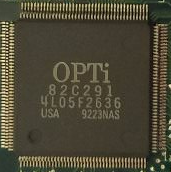
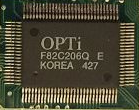
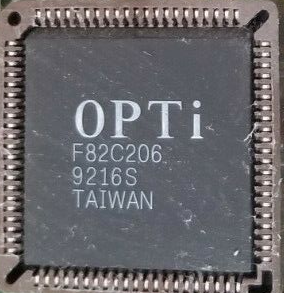
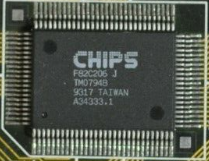
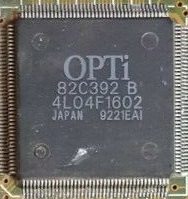
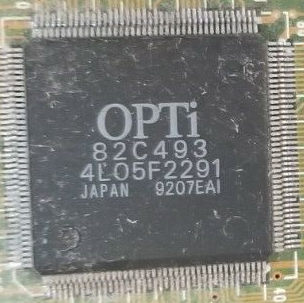
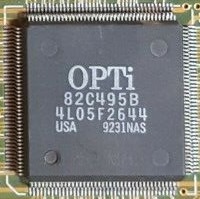
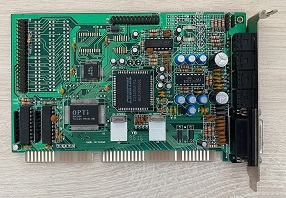
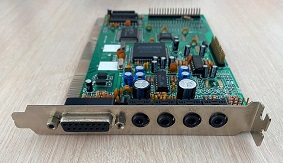
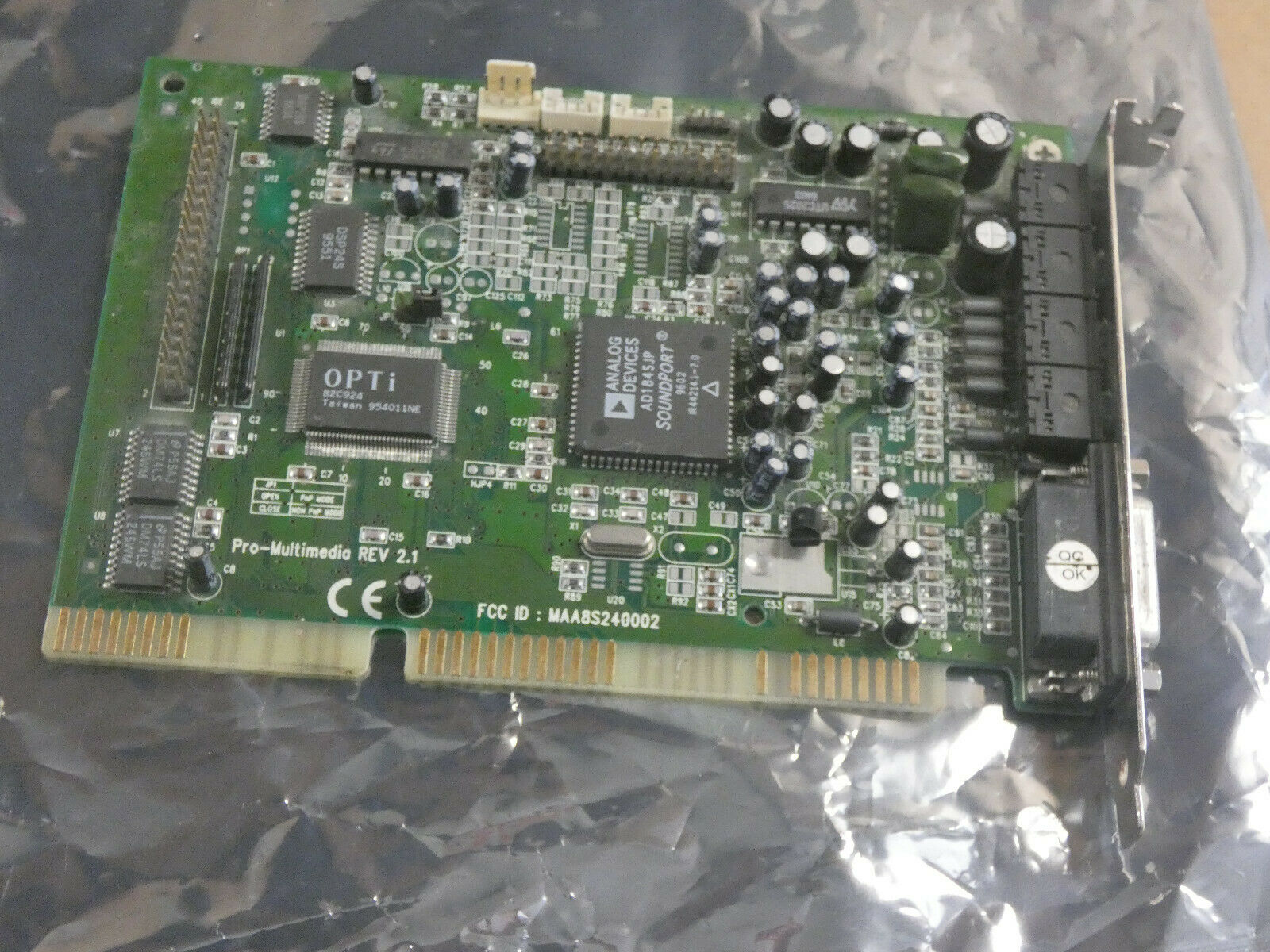
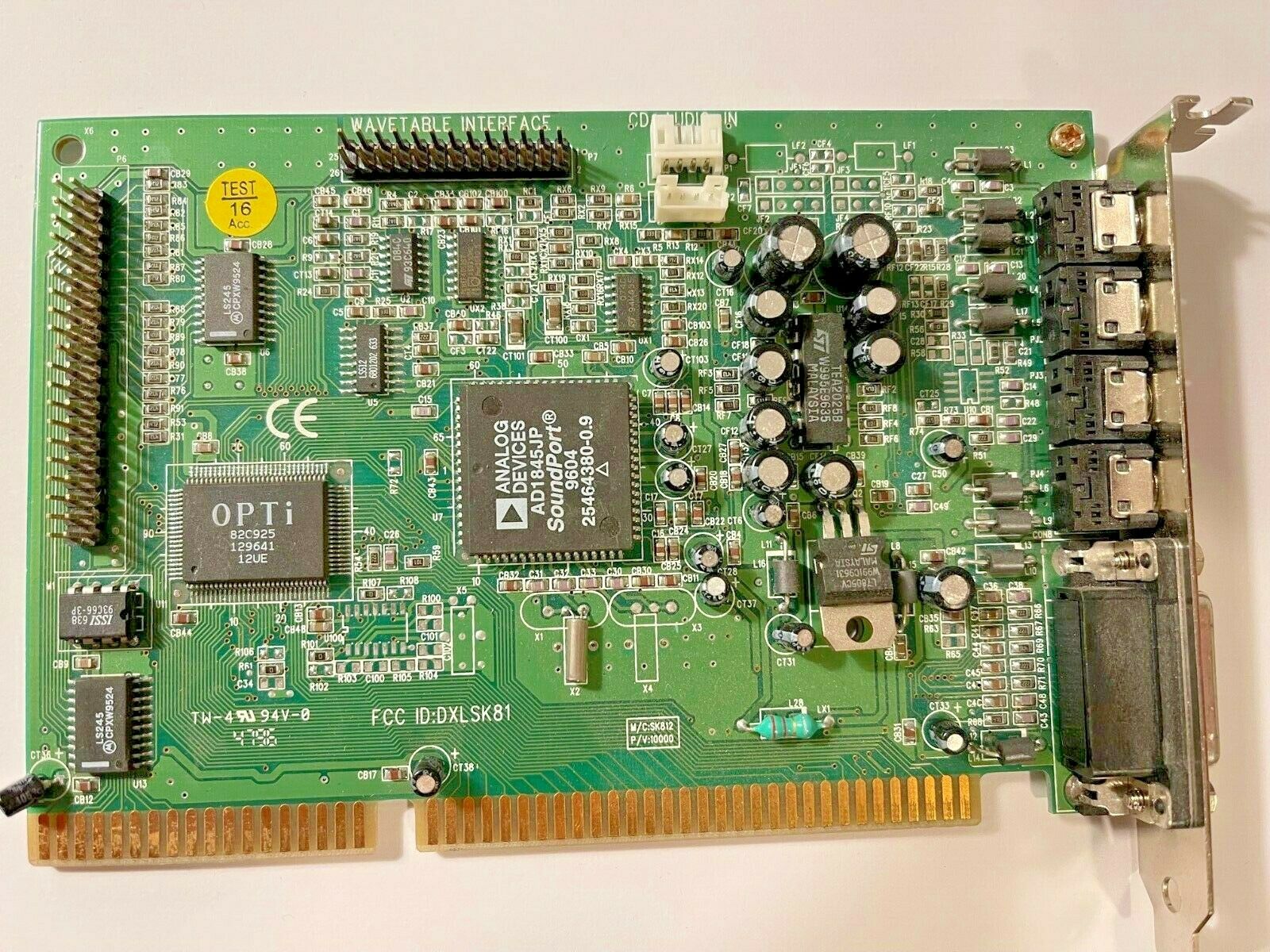
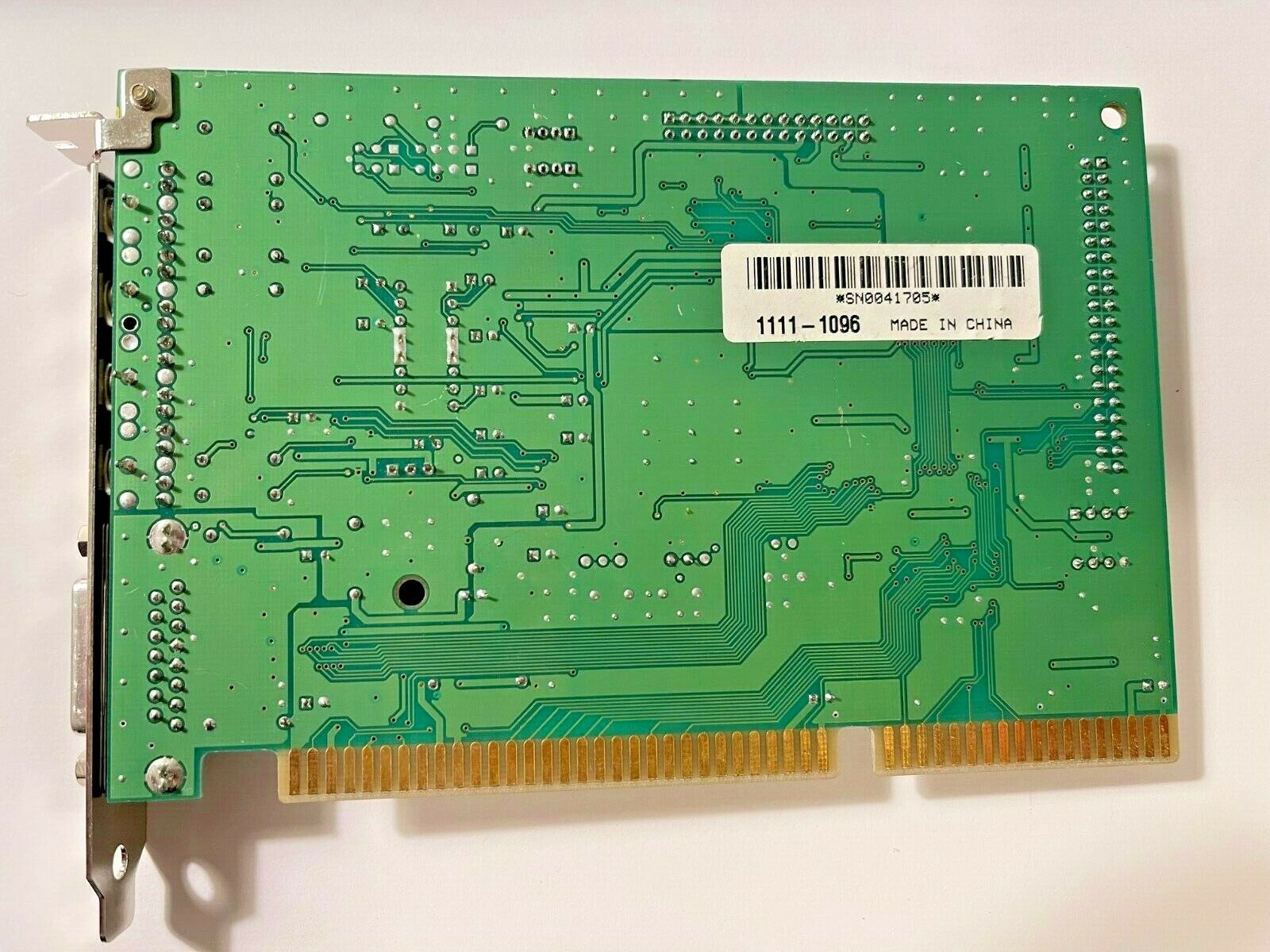
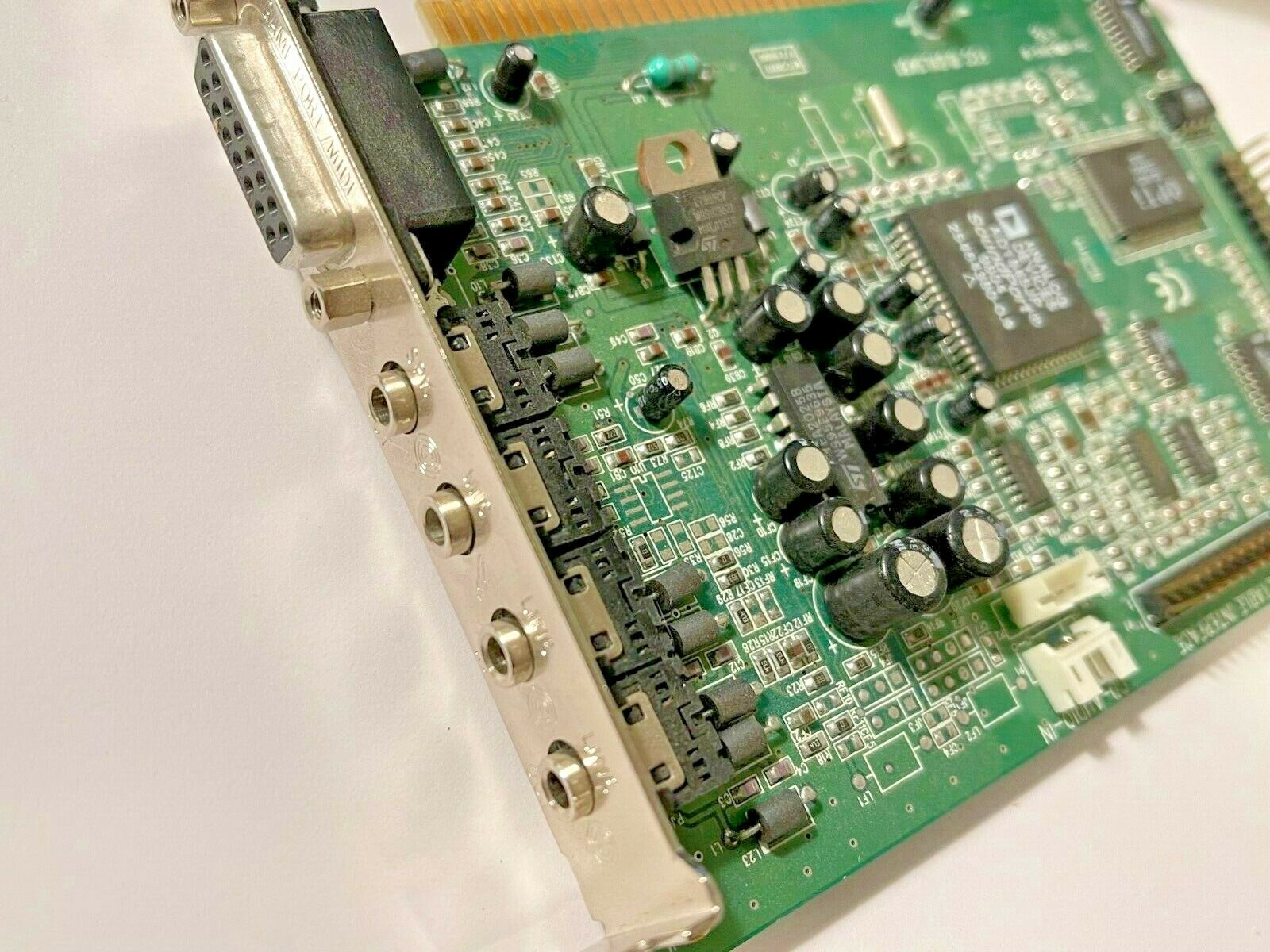
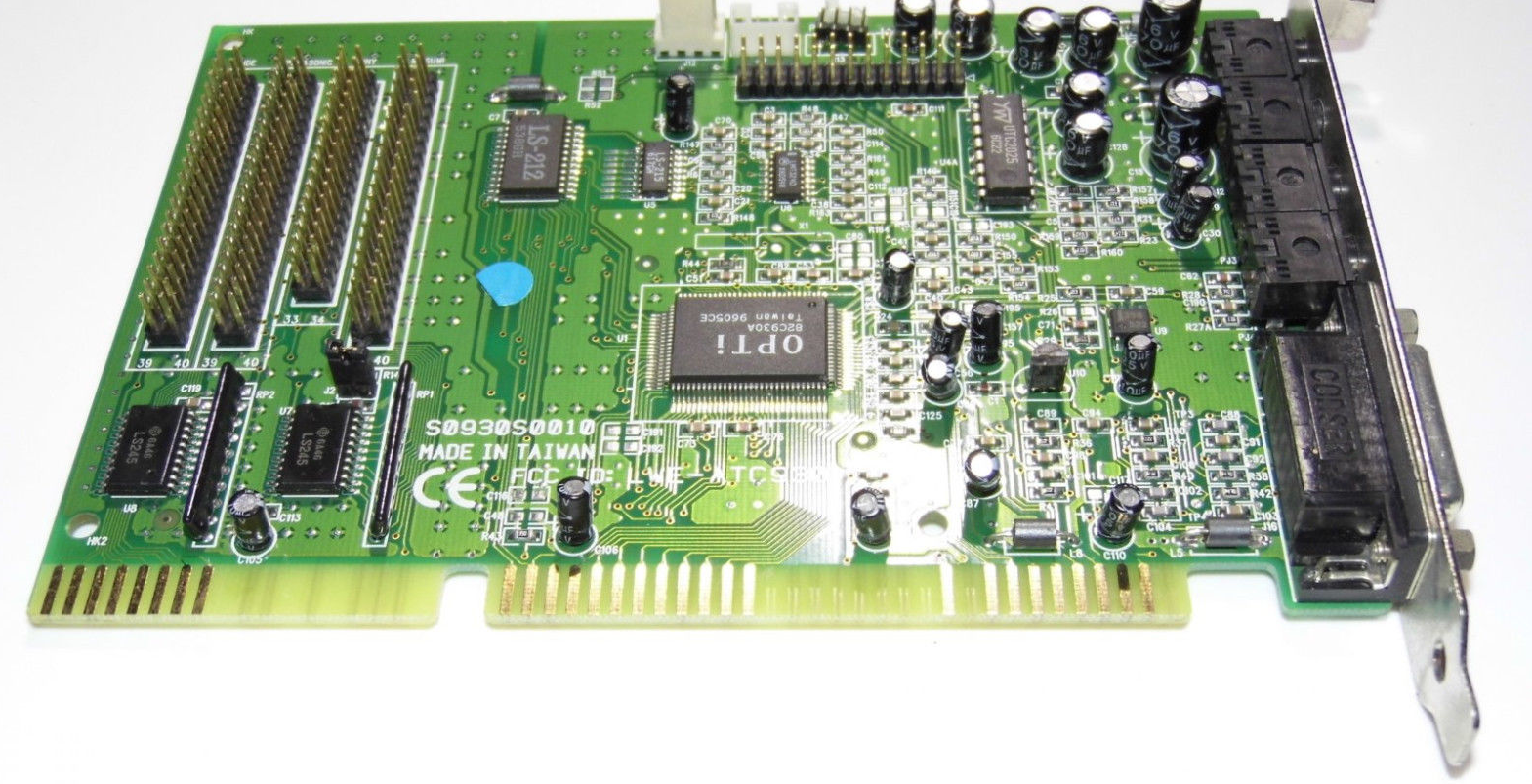
.jpg)
.jpg)
.jpg)
.jpg)
.jpg)
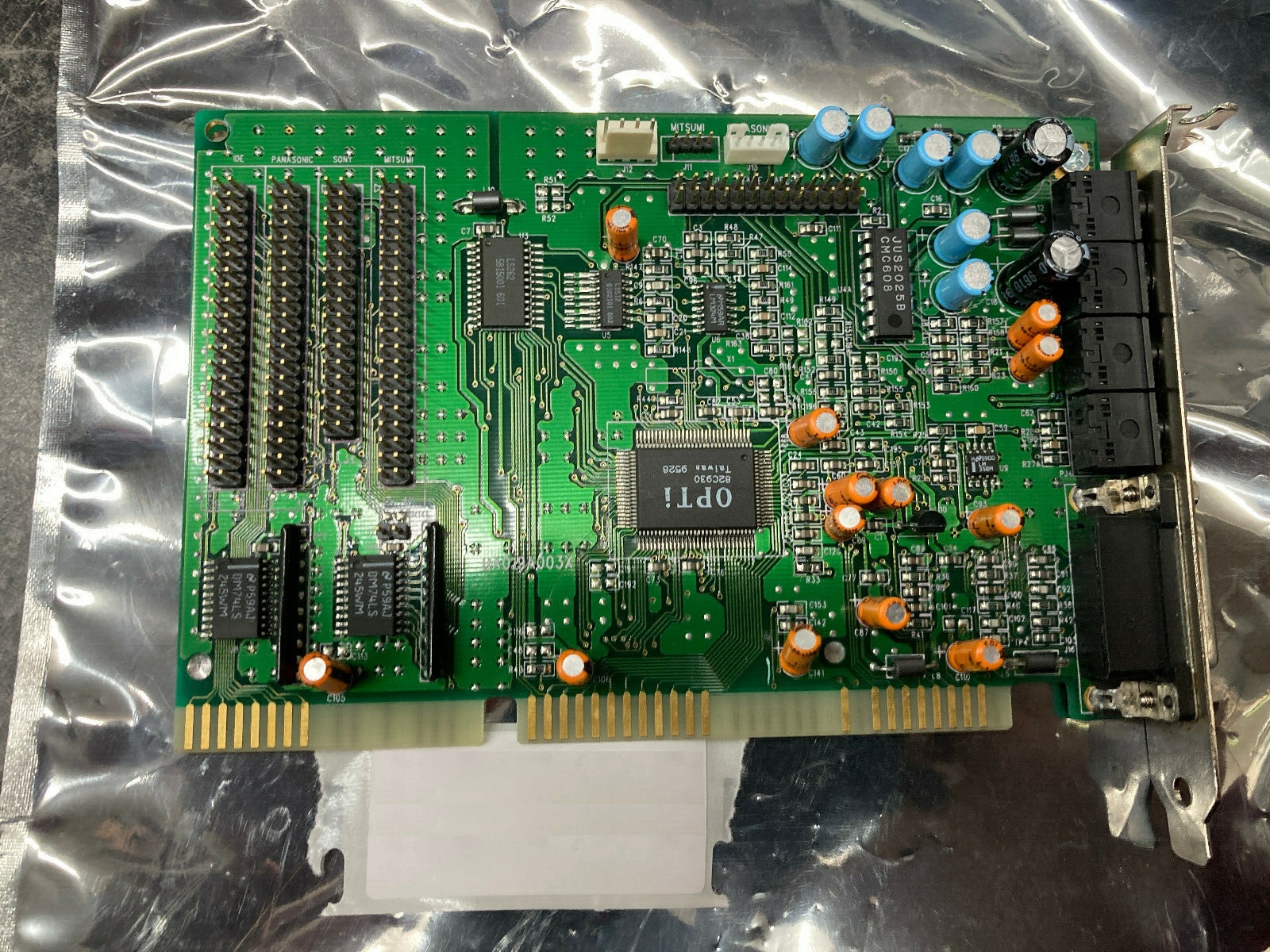
.jpg)